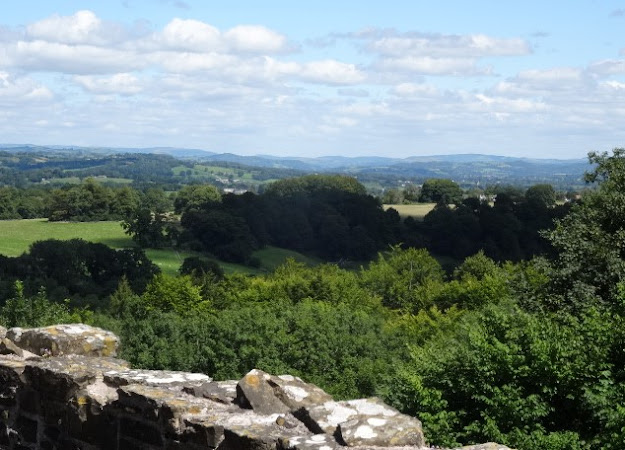After a tour of the town we walked over to the landscape park at Dinefwr. Quite interesting for the hand of Capability Brown, who was employed here as an adviser, and who could be terribly dull, but here had good bones to work with.
It was our second visit and it is only in researching post have I come to realise how rich, complex and ancient is the history of this site. There is an Iron Age hill fort where the castle stands and a large Roman fort under the park. With the collapse of the Empire in the West the ancient Kingdom of the Demetae (its civitas was at Carmarthen) re-emerged as Dyfed. The subsequent history is one of repeated dissolution and consolidation, until the emergence of Deheubarth, which was centred on Llandeilo and Dinefwr where eventually the Lords Rhys erected a castle high on the bluff above the river Towy. A small town grew up to the north of the castle augmented by a second community, Newton (Drenewydd) further north still. Both have disappeared, and the Park has swallowed their remains. The castle survives though succeeded by Newton House, aka Plas Dinefwr, built on the site of that second community. And Newton House was our first destination, though because of Covid closed to the public. I'm not that sure we missed much. I wrote about this in my first Dinefwr post, but I will say it again. The National Trust should have employed a leading interior designer to work on the interior. This was their policy in the 1960s & 70s: David Milnaric at Benningbrough; John Fowler at Clandon Park and Sudbury Hall; and David Hicks at Blickling Hall. These designers combined historical knowledge and refined aesthetics. It was a self-confident approach, but like many institutions today confidence is something the Trust lacks. Enough with the rant. Newton House dates from the 1660s and was given a thorough-going High Victorian Gothic face-lift in the 1850s by J R Penson. The result is, perhaps, not entirely satisfactory.
Our next stop was the castle. The views from the battlements were wonderful. The 12th century round keep, continued in use into the 17th century, a belvedere being added to the top to take advantage of those views.
Our final stop was Llandyfeisant church - a tiny structure embowered beautifully in trees below the park, dedicated to St.Tyfi. One of the followers of St Teilo, there are a number of confusing traditions around the saint one of which places his martyrdom here. Heavily restored in c. 1879, but rather beautifully and sensitively done. According to 'The Buildings of Wales' the architect was Rev William Wiggin of Hampnett, Glouscetershire, Lord Dynevor's brother-in-law; according to 'Coflein', J Kyrke Pearson (I think they mean Penson) of Oswestry, the guy who worked on Newton House. Roman remains were found here in the late 18th century and it was then asserted that the church stands on the site of a Roman temple. Contemporary historians have suggested it stands on the site of a Roman bath house attached to the fort. Just to the north of the church we found what we wondered was a holy well. Research on the internet didn't get me very far. There was mention of the Dinefwr Well and the Nant-y-Rheibis, but nothing to firmly locate it by the church. Long the estate church of Dinefwr, the late 20th century has not been kind and for a number of years the church was derelict. It is now being restored.










No comments:
Post a Comment